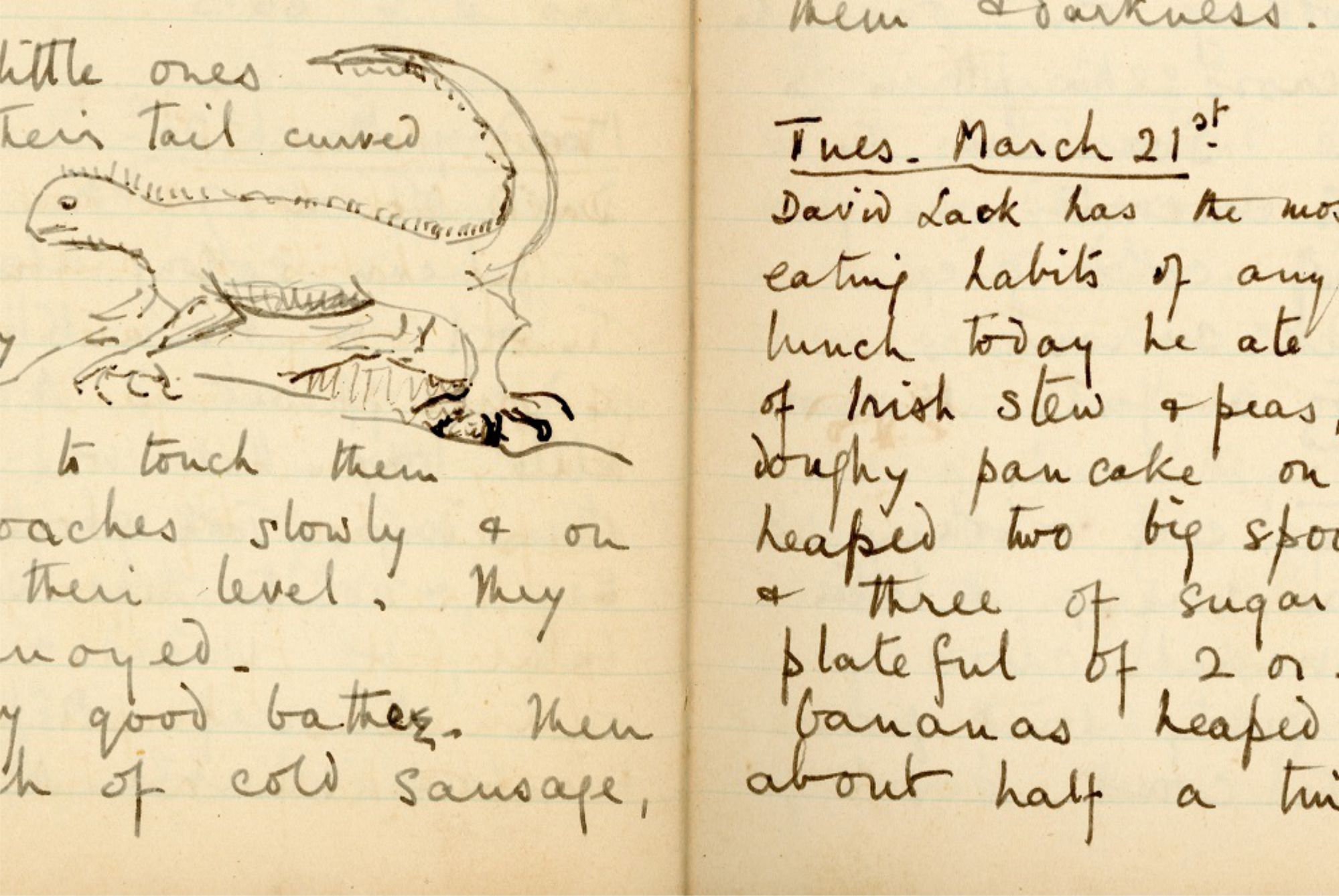Letters from the library
#04. Georgina's diary
The notebook was wrapped in a light blue cardboard, neatly folded for protection. There, inside that sort of box, it had been invisible for years. No one seemed to have requested it for reading in the library's main room, so its quietness had not been disturbed at all. It placidly slept in the corner of one of the library's wooden shelves, a corner that some friendly hand had assigned to it. I guess that, because of that lack of visibility, it managed to bypass my radars.
It happens that the little book I am talking about could not maintain its anonymity much longer. It underwent a general revision of our collections that involved, among other things, the re-cataloging and the physical reprocessing of each and every one of our books. A revision that took it from its well-guaranteed invisibility.
When she took it out of its light blue case, one of my colleagues —the one who had the chance to work with that particular document— showed it to me. I think she already knows about my taste for old papers and antiques.
It was a small notebook, of yellowed paper and blue lines, covered in a brownish fabric that might have been white or cream in the past, before time gave it its own patina, and with a handwritten note on the cover.
Diary of Galapagos.
I did not recall seeing any document with that title in our collection...
[...and here I will open a parenthesis and will hasten to explain, not without a blush, that we librarians do not always know our entire collection, nor have we read all of our books... Except in cases of general inventory, we rarely touch all the items of our collections. And although we touched and reviewed them, sometimes we don't know those books' and those boxes' contents. We tend to learn about our documents over time, according to the requests of our users, or our own investigations: those trips that some librarians embark on and that take us to navigate among our shelves for years...]
...and since it didn't ring a bell, I crossed my fingers and wished that I was facing one of those jewels that could contain surprises.
And boy, did it contain them...
That Diary of Galapagos turned out to be the travel log of Rosamond Georgina Lloyd, the wife of a British chemist / botanist named Thomas Taylor. Along with him, Georgina was in Galapagos in 1938-9, as part of the scientific expedition led by the now famous (and then unknown) David Lack.
The diary is a treasure for many reasons. Because it is an original document, manuscript and unpublished, and it is perfectly preserved. Because it was specifically donated by Georgina to G. T. Corley Smith, a CDF member and promoter of our library. Because it describes the entire trip, from his departure from London to his arrival in the same city several months later, in great detail, and from a daily and personal perspective. Because it is the voice of a woman, who was scarcely heard back then. Because it is the voice of a non-scientist participating in a scientific expedition, and giving her own opinion about what she saw (which was not always polite). Because it is the voice of a high-class British speaking about South America. Because the expedition lived in Santa Cruz and Georgina describes life in Academy Bay at the beginning of the 20th century, and her coexistence with characters such as the Angermeyer brothers, Captain Stampa, or the Küblers and their daughter, Carmen (today Angermeyer) who then would not exceed 10 years. Because it describes, in the first person, native landscapes and species, and investigations that were then ongoing and that later marked the history of science in the Galapagos (the one of Lack with the finches, or the one of Taylor himself with plant pigments). Because it clearly reveals many tics (racist, classist, sexist) and, also, many behaviors that were advanced for a woman of the time...
That surprising, interesting, and even moving, can be those little handfuls of sheets that we preserve, with all the possible care, on the shelves of our libraries and on the boxes of our archives.
I would like to close these notes by sharing a fragment of Diary of Galapagos. These are the notes that Georgina scribbled in her notebook on Sunday, April 2, 1939, when she left the islands (never to return). I think that the ones that I will write down in my own diary when I leave the archipelago will not be very different.
Goodbye, Indefatigable; good bye, all you people, who have been so kind to us, and who quarrel so fearfully among yourselves; good bye, the iguanas and tortoises and turtles, and the birds under the cliff, and the night herons who bark and grunt at sunset; good bye, nice dogs sitting on the balcony silhouetted against the sky, and the five cats slinking among the palms and the papayas, and the wild donkeys who all night long keep up an interminable chorus all over the island.
Good bye, Galapagos.
[See also: Georgina Taylor's manuscript].
Subject categories: Biography | History of Galapagos | History of science | Natural history
Keywords: Culture | Daily life | Drawings | Expeditions | Manuscripts | Memory | Travels | Women
Time framework: 1939
Text & picture: Edgardo Civallero (edgardo.civallero@fcdarwin.org.ec)
Publication date: 1 April 2020
Last update: 1 November 2022
